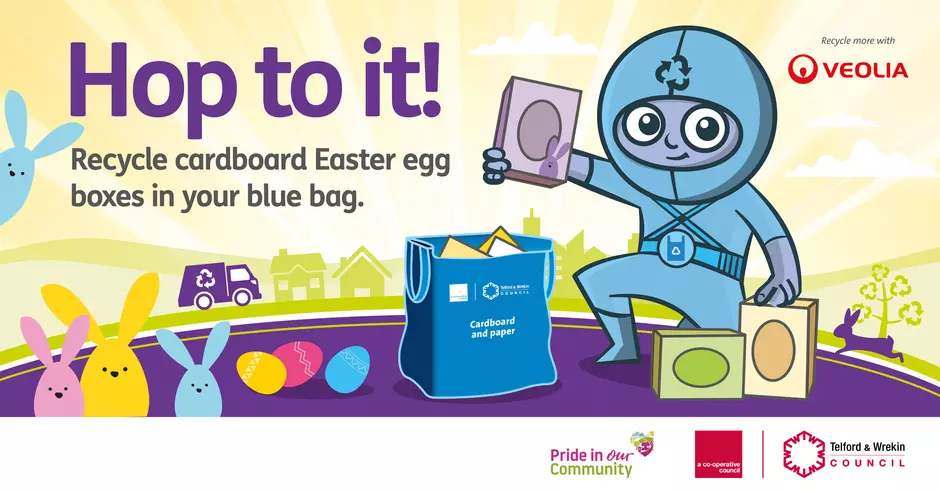Easter packaging - it’s all in the box

The UK eats around 80 million Easter eggs every year, generating approximately 4,500 tons of packaging. A study by Which? revealed that the packaging alone accounts for up to a quarter of the total weight of the most popular Easter eggs on sale on the High Street so it's important to pick sustainably and recycle wherever possible.
To help prevent a rise in unnecessary waste, Veolia, Telford & Wrekin Council’s waste and recycling contractor, is asking Telford and Wrekin residents to reduce and recycle their Easter egg packaging this Easter. Many retail giants are taking big steps to make more sustainable Easter egg packaging that can easily be recycled. Veolia has provided some top tips to help residents recycle their Easter packaging correctly:
- Cardboard - This goes in your blue bag. Remember to flatten the cardboard down to create more space in the bag
- Plastic - If your Easter treat does contain plastic packaging remove this and put it in your general waste bin
- Flowers - If they’re starting to wilt, give them a second life by adding them to your home compost bin or green garden waste bin
- Easter cards - Make sure they are not decorated with glitter, so they can be recycled. They can then go in your blue bag
- With most of us spending Easter locally this year, if you’re posting gifts try to reuse packaging boxes and wrap with brown paper
- Shredded paper can go in your blue bag (wrap in newspaper so it doesn’t blow out of your bag)
Steve Mitchell, Regional Director for Veolia said: "Chocolate egg manufacturers have listened to public concerns and have made significant improvements by reducing the amount of single-use plastic packaging on Easter eggs. We’re now asking Telford and Wrekin residents to keep up the good work and ensure that their Easter packaging is recycled correctly.”
In Telford and Wrekin, cardboard, cans, glass, tins, aerosols, plastic bottles, yoghurt pots, margarine tubs and paper is collected fortnightly by the Veolia collection crews. The recycling is then taken to be sorted at the Materials Recovery Facility at Four Ashes, before being baled and sent to reprocessors to become new items.


